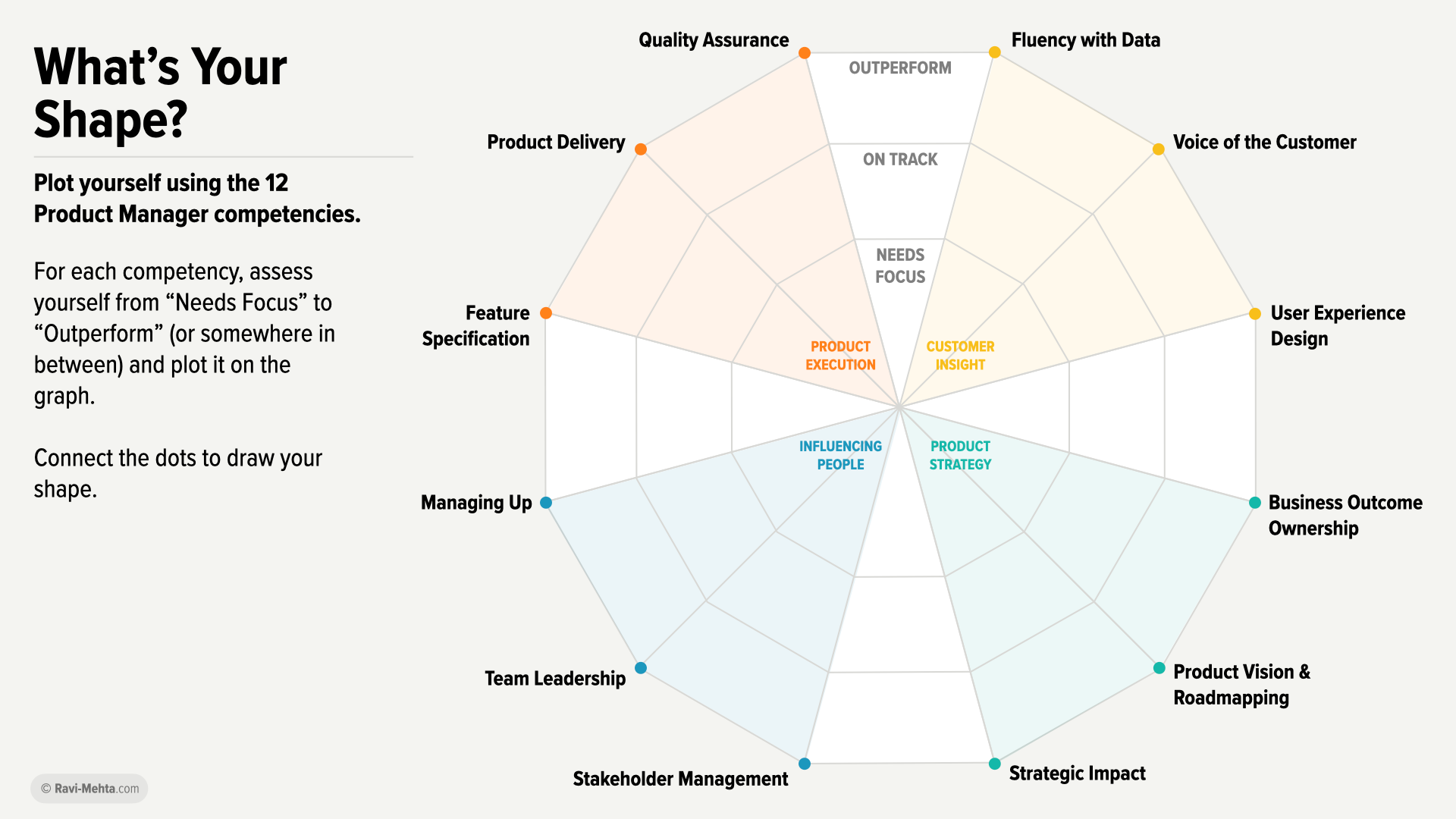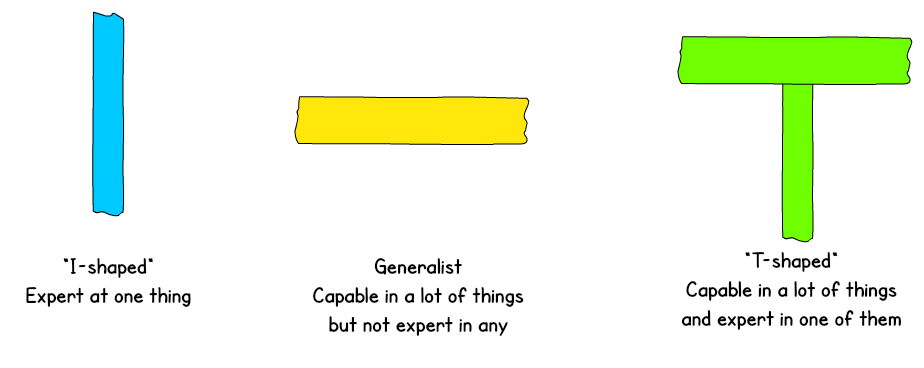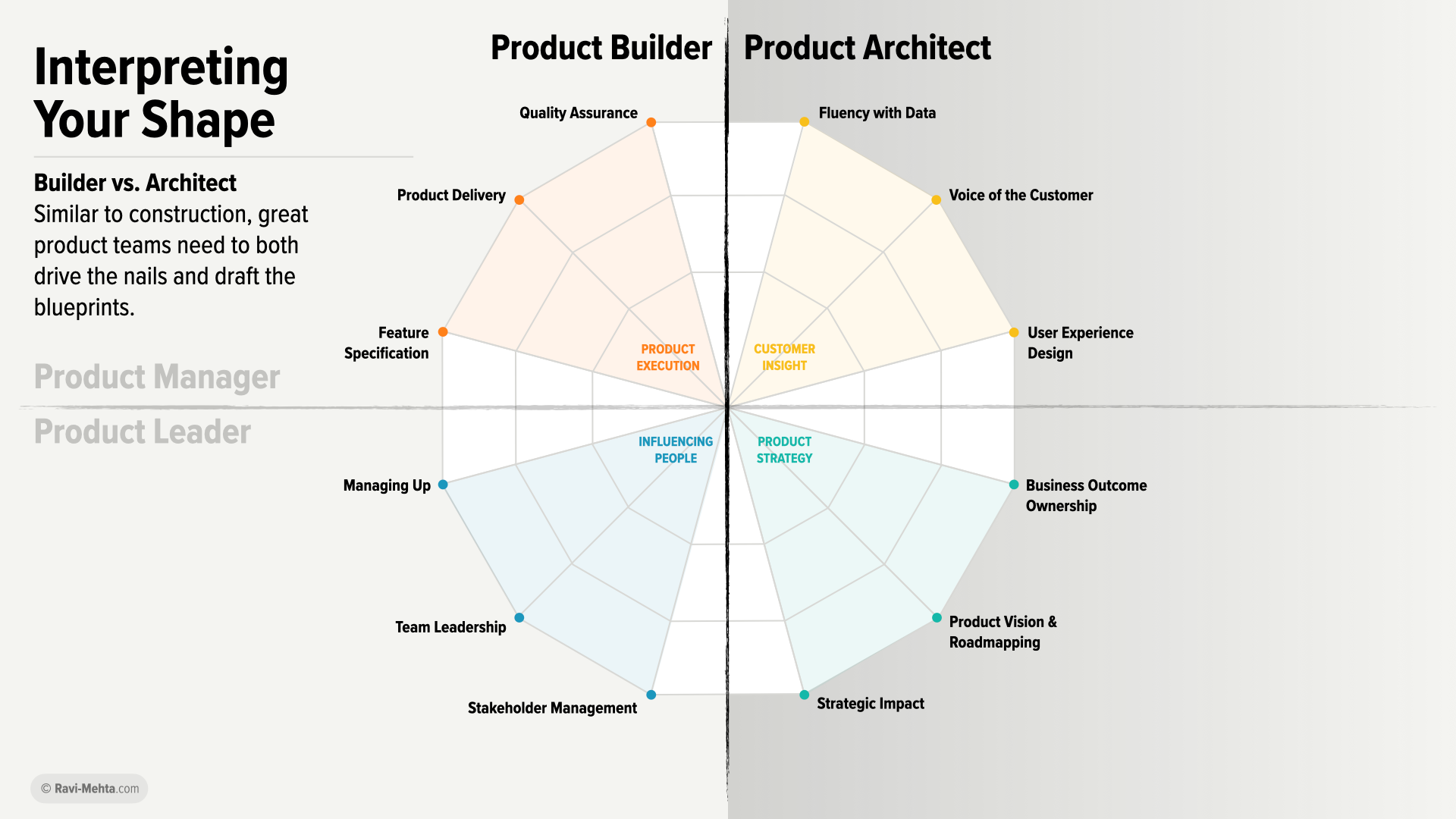In How To Become a Peak Product Manager, I introduced the 12 skills PMs must learn to build products that are valuable to their customers and their companies. The 12 competencies are organized into four areas:
- Product Execution (the ability to build exceptional products)
- Customer Insight (the ability to understand and deliver on customer needs)
- Product Strategy (the ability to drive business impact via product innovation)
- Influencing People (the ability to rally people around the team’s work)
There is a lot to master. Most PMs, even peak PMs, excel at only a handful of these competencies. The difference between the average PM and the peak PM is an understanding of gaps and the ability to unite a team that fills those gaps.

In this article, we’re going to discuss how you can use the 12 PM competencies to identify your strengths, reinforce those strengths, and assess any areas holding you back. We’ll also discuss how to build teams that fit together like puzzle pieces — making the sum of the parts greater than the whole.
But first, let’s look at what makes for exceptional people and exceptional teams.
If you are interested in using this approach for you or your team, download the Product Competency Toolkit, which now has worksheets PMs can use to plot their shape.
The Recipe for Growth
In 2011, McKinsey, the renowned strategy firm, and Egon Zehnder, one of the world’s leading executive recruiting companies, began an exhaustive survey of over 5,000 people. They wanted to understand the differences between rapidly growing companies and the rest of the pack. They wanted to understand how leaders factor into those differences.
What they found was surprising.
Consistently, leaders at the highest performing companies were average or even deficient at many important leadership competencies. Conversely, the average companies focused on building well-rounded leaders.
The average companies were following conventional wisdom: weaknesses hold you back — so those companies spent time identifying people’s weaknesses and filling the gaps. But they were missing an essential fact about human nature.
Exceptional people have natural talents, and they are at their best when they leverage those talents. Think about something you’re great at. How did it feel the last time you showed off that talent?
The outlier companies recognized that exceptional people do their best work when they are encouraged to use and grow their natural talents. They also recognized that talented people have weaknesses — often in mirror image to their strengths.
It’s energizing for talented people to spend time reinforcing their strengths and demotivating for them to struggle with improving weaknesses.
Average companies spend a lot of time identifying and addressing areas of weakness. The result? Well-rounded leaders who were consistently unexceptional.
Meanwhile, the outlier companies chose to invest in people’s strengths and tolerate their weaknesses. McKinsey calls this “spiky leadership.” Exceptional leaders spike in critical areas and surround themselves with people who spike in complementary areas.
This is not to say that companies should tolerate incompetence. Incompetence is subtractive — it drags a team down. Every person must bring a baseline level of competence to the team so that they are adding to, not subtracting from, the team’s capability.
The popular concept of “T-shaped people” offers a similar insight. The best teammates are good at many things, but spike in areas aligned with their natural talent.

Individuals should be spiky; teams should be well-rounded.
Today, the market for new products is hyper-competitive. There is no room for average products. The products that break through are exceptional. Exceptional products, like exceptional companies, are built by spiky people working together on well-rounded teams.
People need to “know their shape,” so they can fit their team together like puzzle pieces. Without a thoughtful approach, teams can end up unbalanced — and unbalanced teams ship unbalanced products.
Knowing Your Shape
Plotting your shape is straightforward. Start by assessing yourself for each of the 12 competencies on a scale from “Needs Focus” to “On Track” to “Outperform” (or somewhere in between those three tiers). Then plot your assessment on the “What’s Your Shape?” worksheet. The worksheet might look something like this for an execution/analytics oriented PM:

Now, let’s interpret the results.
Product Builders vs. Product Architects

The competencies can be organized into four natural groupings — four hemispheres that each represent different patterns that are common in product teams.
The first two hemispheres — the “western” and “eastern” hemispheres — contrast Product Builders and Product Architects. Similar to construction, great product teams need to both drive the nails (i.e., build) and draft the blueprints (i.e., design).
Often, people and teams have a bias towards one or the other type of work, but both are critical to success. Once you’ve plotted your shape, take stock of whether it is overweighted on the left or right side of the chart.
If you tend towards the Product Builder side, you like to get shit done, and you’re good at it. This is critical. But to grow, you’ll need to figure out how to build the right thing.
If you tend towards the Product Architect side, you understand how to design products that move the needle for customers and the company, but you may lack some of the skills to bring those products to life.
Success requires both vision and execution.
In his article, “Why Tim Cook is Steve Ballmer and Why He Still Has His Job at Apple”, Steve Blank describes the distinction between Visionary CEOs and Execution CEOs. This mirrors the distinction between Product Architects and Product Builders.
Success requires both vision and execution. However, Steve Blank concludes that vision is increasingly vital given the fast-paced, technology-driven changes of the 21st century. He councils boards to appoint Visionary CEOs over Execution CEOs.
Similarly, product teams require both Product Builders and Product Architects, but the Product Architecture competencies are of outsized importance in today’s world.
If you are a Product Architect, then you can grow by investing in your strengths and pairing yourself with strong Product Builders.
If you are a Product Builder, the path to growth looks different. In addition to pairing yourself with teammates who augment your skills, you must personally level up your Customer Insight and Product Strategy capabilities.
Product Managers vs. Product Leaders

The second two hemispheres — the “northern” and “southern” hemispheres — contrast Product Managers and Product Leaders. As PMs get more senior, they shift focus from managing products to leading strategy and people. As this shift happens, the importance of each competency evolves.
During the journey from Product Manager to Product Leader, PMs work clockwise around the competencies starting with Product Execution.
PMs need to master Product Execution early in their careers — shipping product is the foundation for success as a product manager. At this stage, junior PMs need the time and space to learn how to execute. They can and should rely on their managers to help them define what to build.
As PMs progress in their careers, they should take a more active role in architecting the product. This is where the skills of Customer Insight come into play — initially at the feature level. Strong PMs and Senior PMs are able to define, build, and evaluate successful features.
Next, PMs must learn to think beyond a single feature and start thinking about how features connect to each other — how they ladder up to a clear, compelling, cohesive vision for the product and how they connect to the company’s strategy. This is the point at which PMs, at the GPM and Director level, begin to shift from Product Managers to Product Leaders.
Product Managers build products. Product Leaders build products, people, and companies.
As Product Leaders become more senior, they increasingly work through people. There may be dozens or even hundreds of people mobilized to bring a Product Leader’s vision to reality. These senior leaders must master the art of Influencing People throughout the organization.
Great Product Leaders build strong product teams, but this is just one component of product leadership. Product Leaders must manage up and across. They must act as the connective tissue that brings people across the company together to achieve product goals, and they must work effectively with executives to achieve company strategy.
Throughout this journey from Product Manager to Product Leader, the competency that remains equally important at all levels is Business Outcome Ownership. No matter their level, the best PMs focus on delivering business impact, not just shipping features.
We can see how PMs evolve from APM to CPO by plotting the relative importance of each competency by level:

Product Manager Archetypes
Everyone’s shape is different, but there are some patterns. Let’s take a look at four common archetypes. These archetypes may resemble people you know or how you see yourself. I’ve exaggerated each archetype’s strengths and weaknesses to illustrate opportunities for growth and discuss how they fit into a product development team.
The Project Manager

Some companies and new PMs confuse project management with product management. A good “project manager” is great at execution, but hasn’t yet mastered the craft of creating products that people love and that move the needle for their company.
Companies need to draw a clear line between project management and product management. If they don’t, companies run the risk of fostering teams that know how to build but can’t figure out what to build.
Project managers must work on Customer Insight and Product Strategy skills to grow as product managers. Companies should resist promoting PMs who haven’t started developing those skills — even when they have a strong track record of shipping.
The People Manager

Leadership is a critical element of product management. Great people managers rally teams, stakeholders, and senior leaders. They create the necessary energy to turn product aspirations into product results.
Great people managers are rare, so they get rewarded within an organization. However, it’s important to recognize that Product Leaders must build both people and products. Accordingly, naturally talented people managers should focus on developing Customer Insight and Product Strategy skills. This will give them the tools to not only lead, but lead to the right destination.
The Growth Hacker

Growth-centric PMs combine speed, analytical insight, and test-driven product development to deliver measurable gains on the critical business metrics leadership cares about. They drive growth at each stage of the product lifecycle: acquisition, activation, engagement, retention, and monetization.
Growth has become a critical facet of product management, and every tech company should foster a strong growth team. That said, companies should be careful not to mistake growth optimization with product innovation. If they do, they run the risk of being disrupted by more innovative competitors.
For example, Facebook has one of the strongest growth teams in the tech industry, and that team has been instrumental in increasing Facebook’s reach to 2 billion people. However, Facebook has reinvented itself many times: the transition from profiles to news feed, the transition from desktop to mobile, and most recently with the transition to stories. Facebook simultaneously optimizes to find the local maxima while innovating to find the global maxima.
Companies need to invest in both growth and innovation, but individual PMs may choose their path. A growth-centric PM can reinforce their skills by further developing strengths like Fluency with Data and Business Outcome Ownership or evolve by focusing on skills like Voice of the Customer and Product Vision & Roadmapping.
The Product Innovator

Product innovators excel at thinking about what comes next. They intuitively understand what customers want, and they can translate that understanding into a compelling vision for the product.
Innovative PMs are a vital force within their organization — they encourage companies to think disruptively rather than incrementally. This is crucial to the survival of fast-moving tech companies.
However, innovative PMs often suffer a weakness that is a mirror image of their strength — they may have a hard time breaking their big ideas into iterative, measurable pieces. But companies need to move quickly and validate their innovative bets. Otherwise, they risk over-investing on the wrong path.
Companies can achieve this in one of two ways: by pairing innovative PMs with execution-oriented, data-driven teammates or by encouraging individuals to improve their Product Delivery and Fluency with Data. Either way, companies will improve their success rate if they counterbalance intuition with empirical results and analytical thinking.
What’s Your Shape?
We've discussed how to use the competencies to plot your shape and interpret what it means for you and your team. To get started, I recommend downloading the free Product Competency Toolkit, which contains evaluation worksheets and a detailed description of every competency.
Product management is a rare role that requires excellence at opposite ends of many spectrums — analytics and intuition, optimization and innovation, strategy and tactics, team leadership and task management, and, most importantly, building value for customers and building value for the company.
You can’t excel across all of the PM competencies simultaneously. But you don’t need to. The path to success begins with knowing your strengths. Along that path, you’ll meet the complementary people who will make you even better. Together, you and your team will be able to reach the most ambitious goals.

